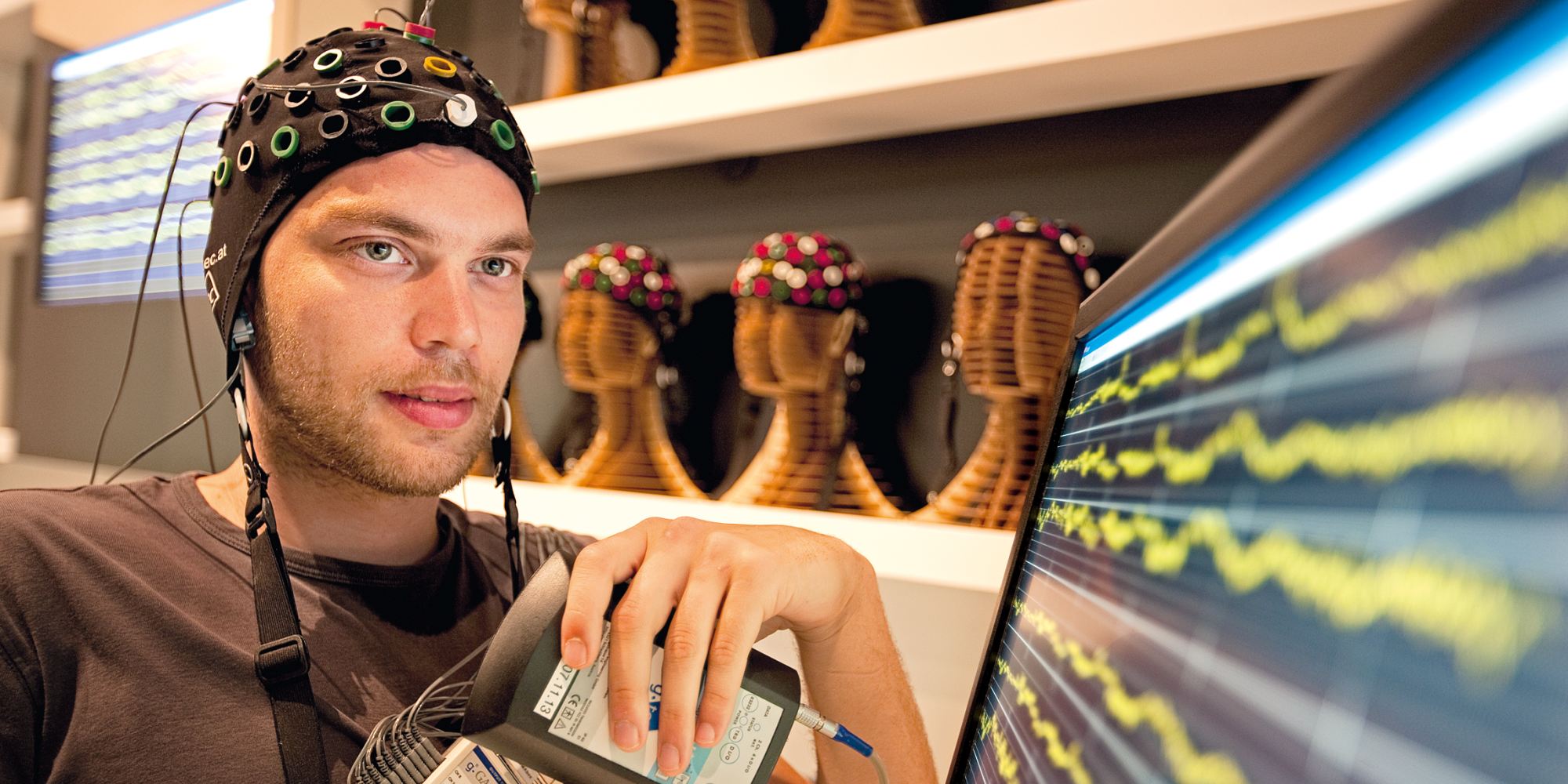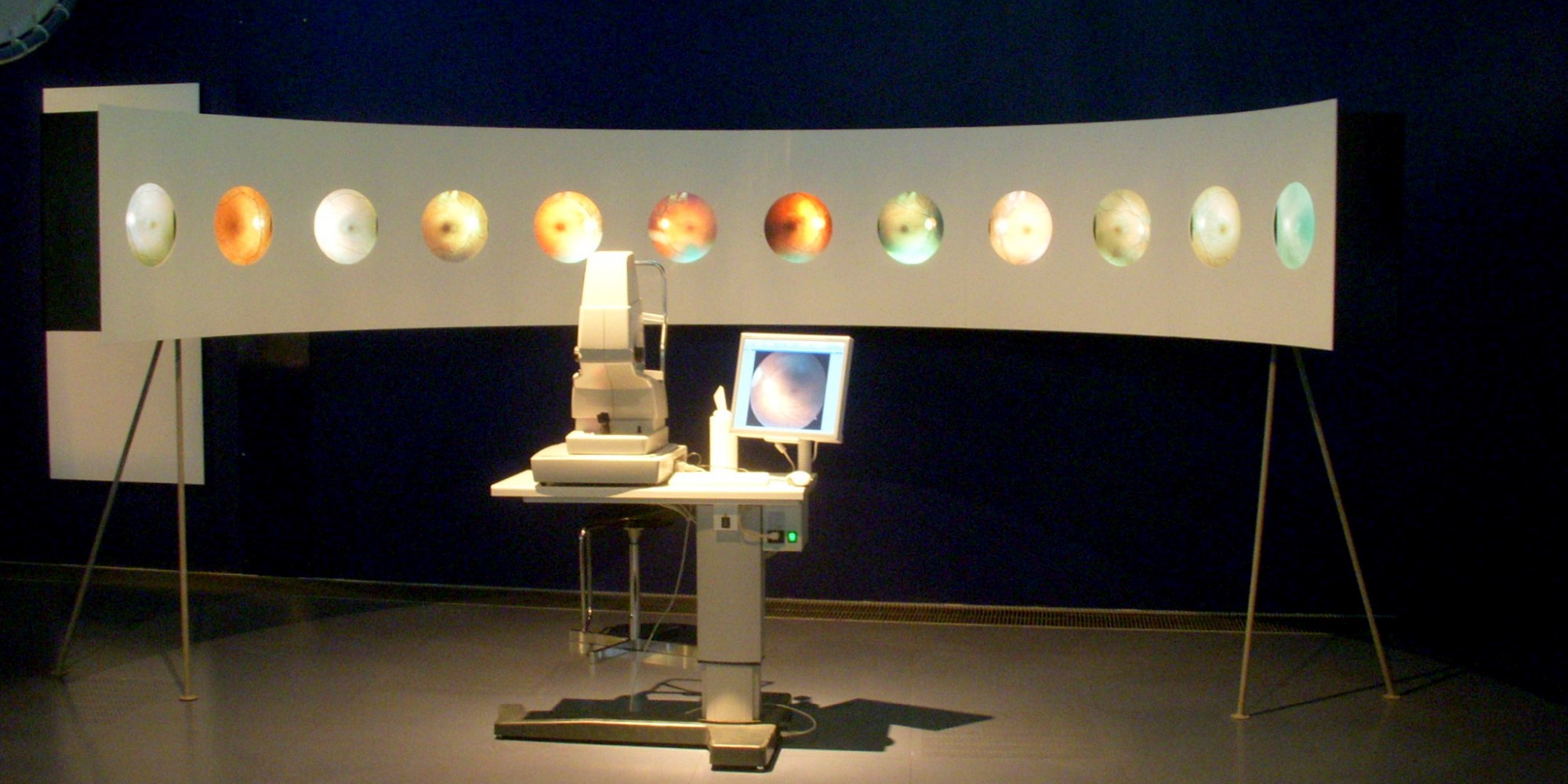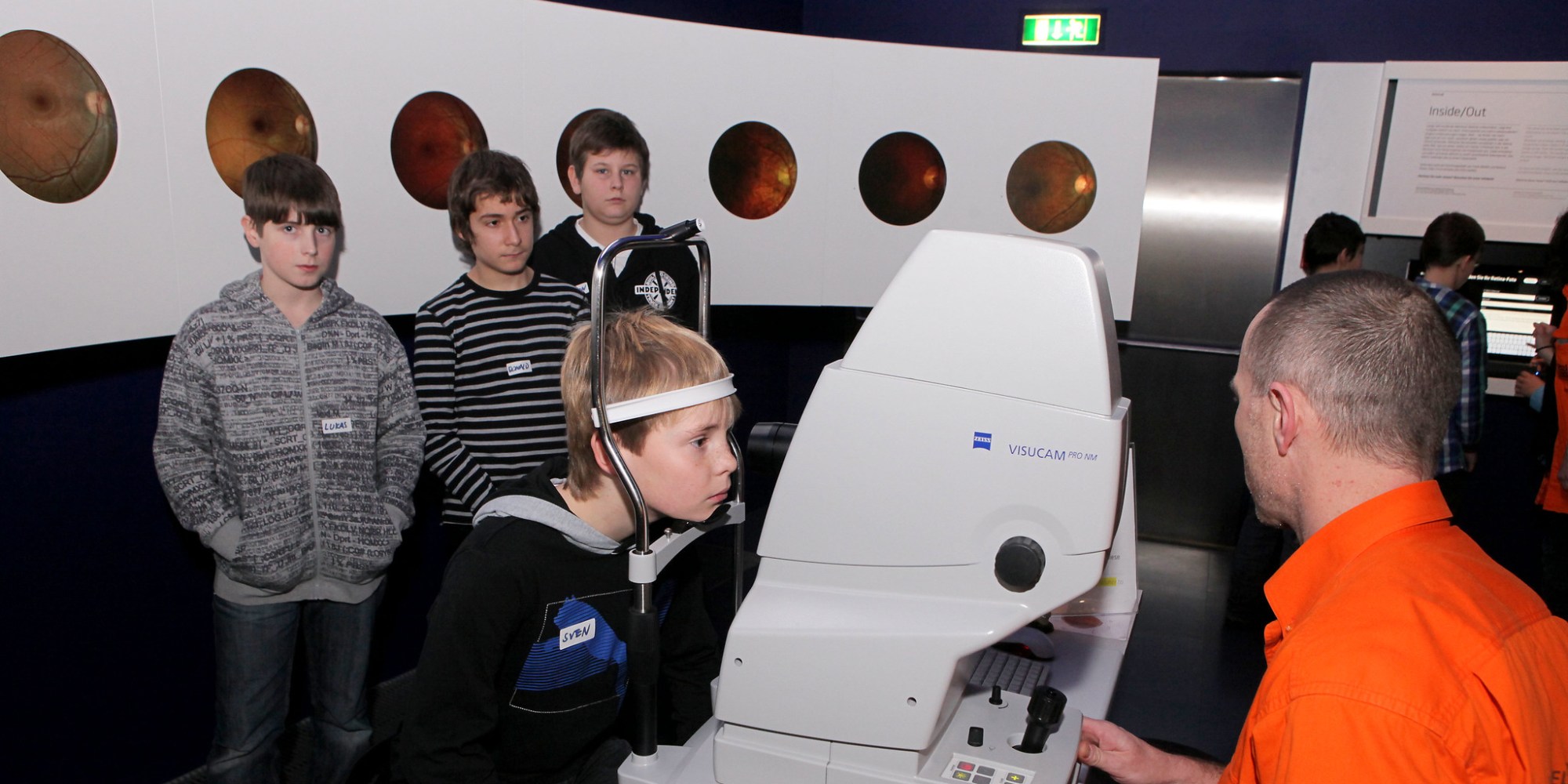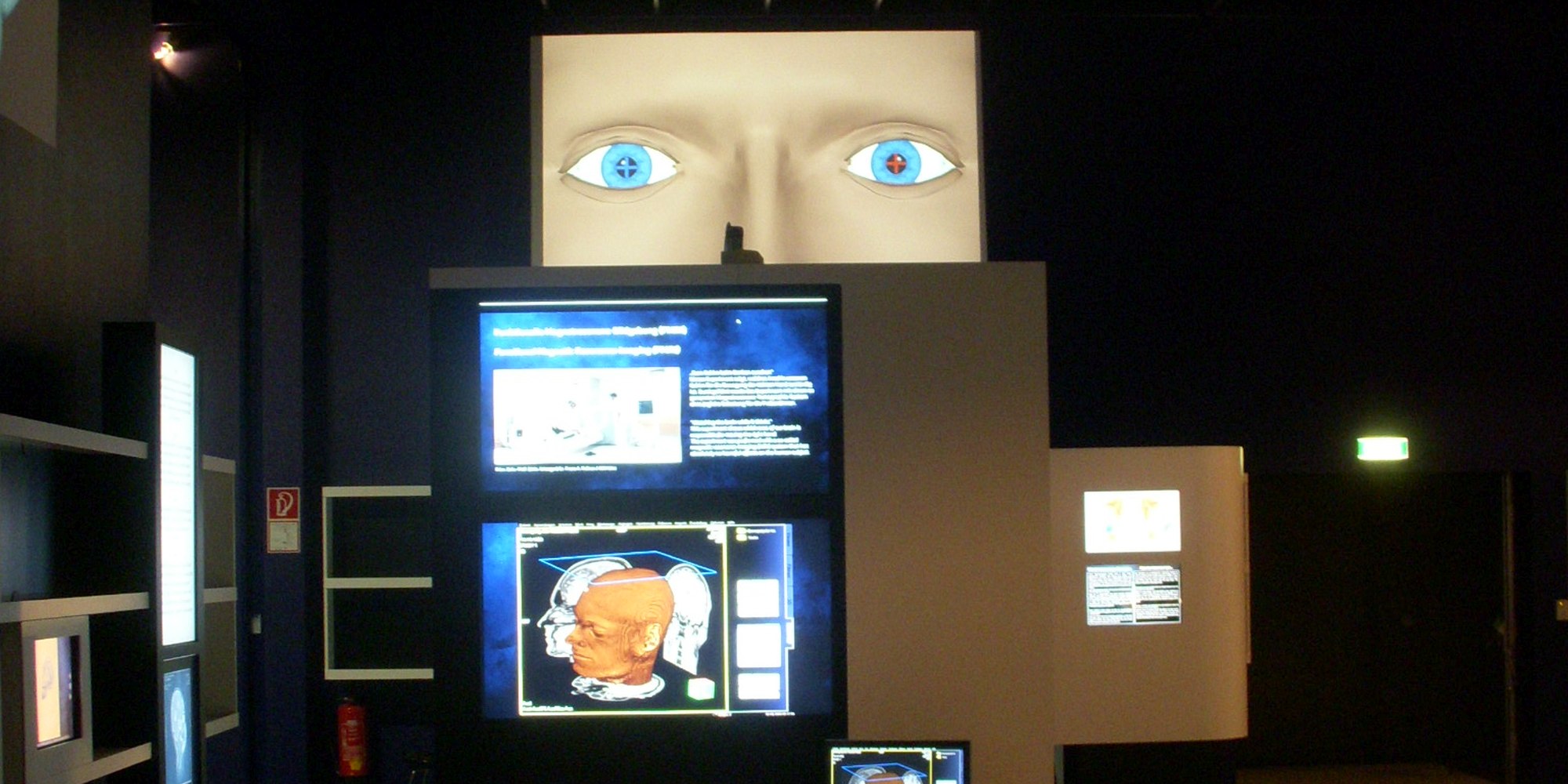The heart piece of the first main exhibition “New Views of Humankind” in 2009 was constituted by four public accessible labs.
The BioLab was a wet lab for hands-on experience with state-of-the-art lab equipment amidst cloned plants. The BrainLab made visitors aware of how humans perceive their environment and all that their brain leads them to believe as they do. The FabLab focused on making computer aided design and fabrication accessible for users and spans from interactive installations for intuitive first experiences to custom designed software for easy access to fabrication tools. Finally, the RoboLab, where contributions from the spheres of art, design and research demonstrated how robots and humans already live together and interact.
The BrainLab visualized the neuro-anatomy of the human eye, the process of seeing, and provided insight to the future of brain research. It enabled the AEC visitors to go on a journey through the fascinating world of our brains. This included the moment a visual stimulus reaches our retina, the complex control of our eye muscles, the subtle processes of perception while we are watching a picture, and the possibility to try out steering a robot via a so-called brain-computer-interface.
Brain research, the desire to understand how our brains work, is one of the greatest challenges in medicine and science. The brain is the most complex human organ – it controls all our body functions (many of which unconsciously), and it is the center of our self, our consciousness. Our view of the world is created in the brain, including everything we perceive with our sensory organs becomes experience and cognition, memories and remembrance, personality and character.
Credits
Research & Development: Christopher Lindinger, Florian Bauböck, Katharina Maria Hengel, Andreas Pramböck, Peter Vasil




